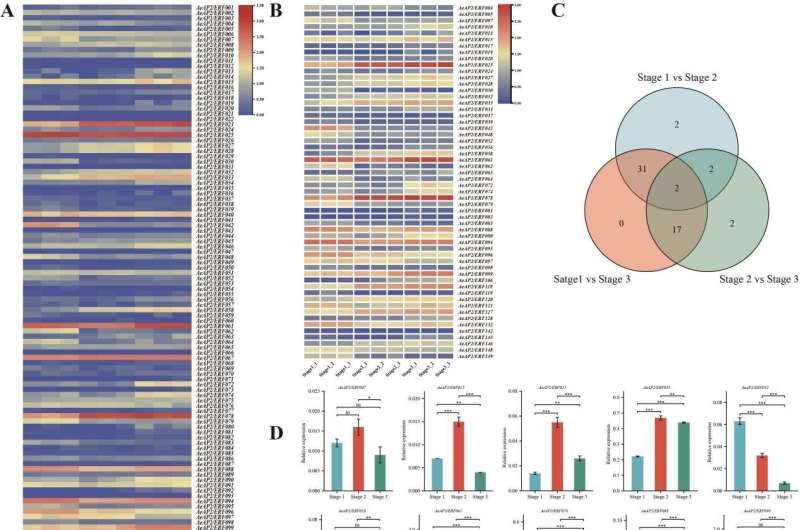Researchers identify AP2/ERF family and potential members regulating flower development in kiwifruit

The AP2/ERF superfamily is one of the largest transcription factor families in plants and it plays important roles in diverse processes. In a long evolution process, the functions and numbers of AP2/ERF changed dramatically. Flowering is a hot topic addressed in numerous studies, and it is also found to be associated with AP2/ERF genes. However, little is known about the importance of AP2/ERF genes for flowering in Actinidia eriantha (kiwifruit).
A research team at the Wuhan Botanical Garden of the Chinese Academy of Sciences identified and characterized the AP2/ERF family from the A. eriantha genome and explained the evolution of the AP2/ERF gene family in two main kiwifruit species. Several key regulators in flower development were predicted as well.
A total of 158 AP2/ERF genes were identified and they were divided into four major subfamilies in A. eriantha. These genes demonstrated a favorable collinearity within A. eriantha, and many of AP2/ERF genes experienced duplication events and were undergoing a purifying selection. Gene structure and protein motif analyses showed that AP2/ERFs in different families were more conservative.
In addition, one third of AeAP2/ERFs were strongly associated with flower transition by RNA- seq of different flower stages. Among them, two genes were expressed abundantly, which indicated that they may play a vital role in plant flower development regulation and flower tissue forming.
This study displays the first comprehensive analysis of AP2/ERF genes in kiwifruit, and it provides a map for screening genes for further functional identification and genetic improvement of agronomic traits of kiwifruit.
This work was published in BMC Genomics, titled "Genome-wide identification and characterization of AP2/ERF gene superfamily during flower development in Actinidia eriantha."
More information: Quan Jiang et al, Genome-wide identification and characterization of AP2/ERF gene superfamily during flower development in Actinidia eriantha, BMC Genomics (2022). DOI: 10.1186/s12864-022-08871-4
Journal information: BMC Genomics
Provided by Chinese Academy of Sciences















